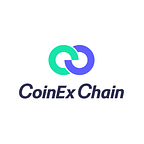A Review of Cross-chain Bridges Native to Public Chains in 2021
In 2021, evolving from the success of a single category (DeFi), the crypto industry witnessed the boom of multiple segments, including NFT, GameFi, etc. Driven by the NFT boom, emerging public chains such as Flow and NEAR went viral, and public chains such as BSC and Solana also became a promising land for GameFi. There are now over 100 active public chains out there. In the future, new public chains will emerge at a faster pace. We are ushering into an era of multiple chains that revolve around Ethereum. Against such a trend, cross-chain bridges are becoming a pressing demand for avoiding asset silos.
The so-called cross-chain swap of assets is to create a bridge between two different public chains, offering custodial services for native assets. Meanwhile, one of the two chains could obtain the status of asset transaction on the other chain through oracle and have it mapped in a 1:1 ratio.
A cross-chain bridge unlocks an ecosystem’s potential for innovation through enhanced interoperability and improves the productivity and practicality of existing crypto assets while enabling them to travel to new places and do new things. For example, using a cross-chain bridge, we could send USDT to CSC and manage our assets on WaterLoan.
As of 2021, there were at least a hundred cross-chain bridge projects on the market. Although there are plenty of cross-chain bridges, the most secure ones are those native to public chains such as Avalanche Bridge and CSC Bridge built by the underlying developer team. Cross-chain bridges native to public chains are backed by their respective security teams and blockchain authorities. As such, users are more willing to trust their security. Plus, they are also the most popular options among users when swapping assets across different chains.
Now, let’s check out the common native cross-chain bridges on the major public chains in 2021:
1. Avalanche Bridge
Official website: https://bridge.avax.network/
Profile: Avalanche Bridge (AB Bridge) is a swapping tool developed by Avalanche Protocol in early 2021. It is primarily used to enable the transfer of assets under the ERC-20 standard on Ethereum to/from the Avalanche network, with the transaction fee paid in AVAX.
Avalanche Bridge is not easy to use. To be more specific, sending ETH to Avalanche requires two processes. To begin with, ETH is packaged into WETH on Ethereum and then deposited into your Ethereum wallet. Following Step 1, you’ll need to send WETH to Avalanche. It is noteworthy that WETH.e only will be deposited into your wallet after 35 confirmations on Ethereum. A complete transaction from Ethereum to Avalanche takes about 6–9 minutes.
2. Terra Bridge
Official website: https://bridge.terra.money/
Terra Bridge, a tool for cross-chain asset swapping provided by Terra (LUNA), focuses on the transfer of tokens on Terra to other blockchain networks. It now allows users to send Terra’s native assets to BSC and Ethereum, supporting the transfer of native assets in the Terra ecosystem such as LUNA, ANC, KPT, UST, synthetic stock assets (mAAPL, mAMC, mGOOGL, etc.), and synthetic assets (aUST and bETH).
3. Wormhole
Official website: https://wormholebridge.com/#/
Wormhole is a tool jointly developed by Solana and Certus, one for cross-chain asset swapping and also a two-way, decentralized ERC-20⇄SPL token bridge that connects Ethereum and Solana. It allows existing projects, platforms, and communities to move tokens across chains seamlessly while fully leveraging Solana’s high speed and low transaction costs.
In 2021, Wormhole launched the V2 to achieve the seamless transfer of token assets between Solana and ETH and enable users to transfer NFTs across different chains.
4. Rainbow Bridge 2.0
Official website: https://rainbowbridge.app/transfer
Rainbow Bridge 2.0 is a cross-chain bridge launched by the NEAR blockchain, as well as an official cross-chain bridge for transferring tokens between Ethereum, NEAR, and Aurora.
Rainbow Bridge offers features with great ease of use. Users only need to log in with their NEAR account and enter the on-chain wallet address and the amount they wish to transfer to or from the address, and the operation will be automatically executed by Rainbow Bridge. The process is just as convenient as transferring cryptos using a wallet on the same chain.
5. Arbitrum Bridge
Official website: https://bridge.arbitrum.io/
Aribitrum Bridge is a cross-chain bridge introduced by Aribitrum, a Layer 2 scalability protocol, to achieve the transfer of assets between Ethereum Layer 1 and Aribitrum, with the transaction fee settled in ETH. It is noteworthy that when withdrawing the assets from Aribitrum through Aribitrum Bridges to Layer 1, you’ll need to wait for a withdrawal period of at least seven days after submitting your request. In other words, you must wait at least seven days until the Layer 1 mainnet receives the assets withdrawn, which indicates a successful withdrawal.
6. CSC Bridge
Official website: https://bridge.coinex.net/
CSC Bridge is a cross-chain bridge launched by CoinEx Smart Chain (CSC) in December 2021. Officially endorsed by CSC, the bridge is backed by unique advantages in terms of security and reliability.
The first assets supported by CSC Bridge include ETH, BNB, USDT, and USDC. In the future, the bridge will also introduce new assets for cross-chain swapping. Relying on CSC Bridge, users will be able to transfer assets between CSC, BSC, and Ethereum with great ease.
It should be stressed that users do not have to pay any transaction fee when transferring cryptos from other chains to CSC through CSC Bridge. In the case of ETH, the minimum amount for cross-chain swapping is only 0.002 ETH, and cross-chain transfers could be completed in 10 minutes at the fastest.
A cross-chain future
The existing cross-chain bridges native to public chains remain in their infancy. In the future, cross-chain bridges will play an increasingly significant role in asset swapping and address the insufficient performance of the underlying public chain. The best cross-chain bridge should be secure, interconnected, fast, efficient, cost-effective, and censorship-resistant. In the future crypto space, only players who could maximize their advantages can stand out from peers in the cross-chain category.
